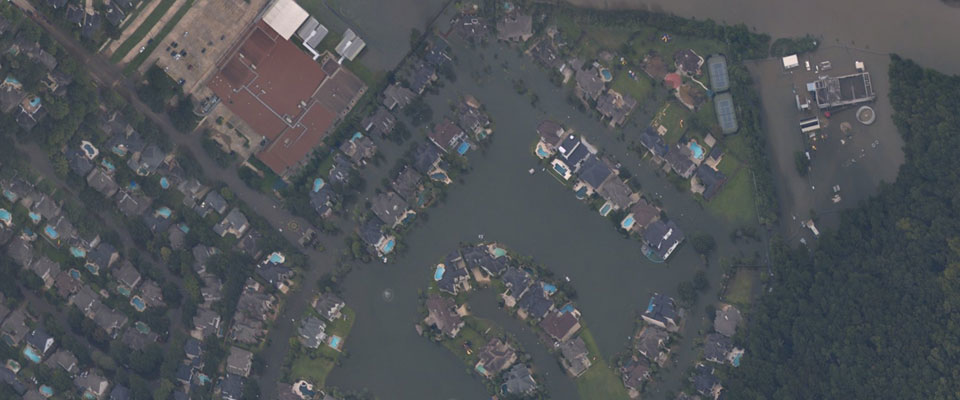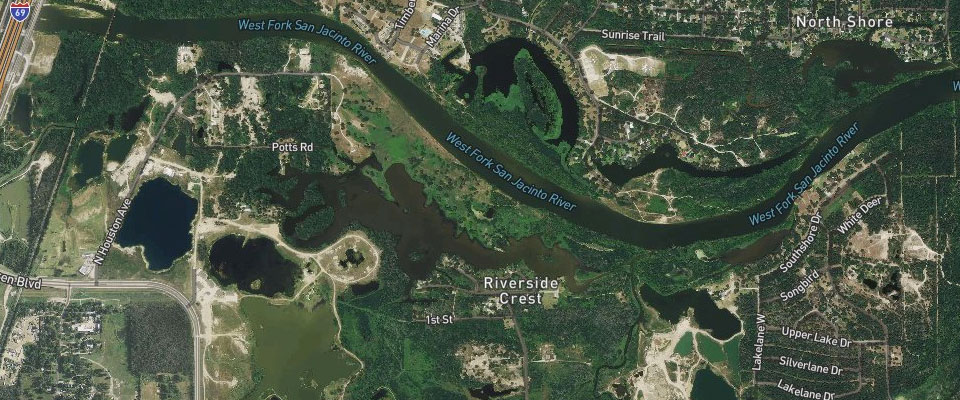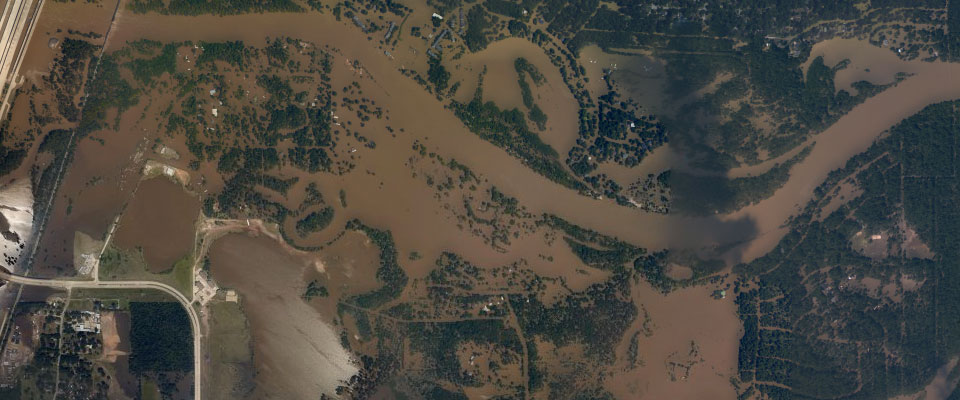For Rick Walker, the fight to end our flooding and bring us recovery is personal. Rick suffered the complete loss of the first floor of his family’s home and labored alongside his neighbors to help them recover. He has vowed to fight for relief and improve flood mitigation for seniors, families and small businesses. There are plans to request funding for mitigation projects for the west side of Houston, but no serious flood mitigation funding requests are even being discussed for the Kingwood, Humble, Atascocita and Huffman areas. This changes today.
Flood mitigation is a large project that only Congress can fund. Houston residents have been requesting State leadership and Federal Government help for many years, but have only received a cold shoulder. Houston needs the help of Congress to induce the State’s help during negotiations.
With out-of-control judges throwing out most of President Trump’s Executive Orders directed at state funding, it will take Congressional action led by Rick Walker to get this done. Walker encourages discussion around this proposal, including hiring an engineering firm to rapidly study the beefing up of the spillway infrastructure around Lake Conroe and requesting an Executive Order suspending all EPA requirements to expedite dredging activities.
Walker says, “If the SJRA does a good job of managing flood control, then this plan would become a very profitable business for the SJRA as well as a great deal for citizens at an average cost of $450/year for $250,000 in coverage. This would allow small businesses and residents with structures valued over $250,000 to buy flood coverage from both FEMA and SJRA to receive up to $500,000 in flood coverage for around $900 per year. Currently, residents and small businesses can only purchase up to $250,000 of flood coverage from FEMA. This is a Houston-led effort with the assistance from the Federal Government. In Congress, I will help protect my neighbors even if it requires me to oppose the State. As neighbors, we need to stick together.”
Walker believes 25,000 homes and nearly every small business in the Humble, Kingwood, Atascocita and Huffman area would gladly pay the $450 per year to the SJRA (instead of FEMA) to obtain an additional assurance that they won’t be flooded again. Since many residents are already paying that same amount to FEMA for flood insurance, this will be a cash-neutral plan for residents. For the SJRA, this would provide an additional $11 Million in annual revenue once the flood insurance account is fully funded and we don’t flood again.
More technical details about how the SJRA Flood Insurance Program might work are below.
Rick has met with sand mine owners on the San Jacinto River and has seen the pollution firsthand. Excessive sand is filling the San Jacinto River which has created massive shifts in the river’s flow. This dangerously redirects water through neighborhoods instead of into Lake Houston, which has lost as much as 65% of its storage capacity due to sand and silt. Since the sand property owners (including mining operators) cannot control their product from entering the San Jacinto River, a special taxing jurisdiction should immediately be put in place to automatically perform maintenance dredging of a portion of the San Jacinto River each year at their expense – not the taxpayers’ expense. Walker is calling for this taxing jurisdiction to be formed immediately.
Additionally, the Federal Government and the State should suspend all environmental and regulatory requirements to allow for dredging activities for both the San Jacinto River and Lake Houston to begin within 90 days.
The Federal Government should only pay for this first dredging, as a flood mitigation project, while funds accrue to the taxing authority. Because hurricane season begins in June, the Governor and the Texas Congressional Delegation should expedite this emergency request.
Walker also encourages additional federal funding to dredge both the Addicks and Barker reservoirs, while also adding a third reservoir in the Cypress Creek watershed to save Braeswood, Bellaire, Meyerland, West University, Rice Village, Tanglewood, the Memorial Drive area, The Heights and other core Houston areas from future floods. Additionally, he requests the connecting bayou system be automatically dredged every five years. Walker encourages the Texas Congressional Delegation to continue working with Governor Abbott to secure complete federal funding for these projects.
The Houston metro-area suffered three 100-year floods in a 15-month period before Harvey came. Looking to solve flooding northeast of the city, Councilman Dave Martin and Mayor Sylvester Turner, members of the city’s Congressional Delegation, and other leaders went to Washington DC in June of 2016 to seek federal help.
“Because of the silt that has gone from various other tributaries that lead into Lake Houston we’ve lost probably about 50% of the holding capacity of the water that sits in Lake Houston,” Martin said in 2016. This comment in 2016 was ominous because the heavy silt caused serious degradation of the flood prevention system and flooded thousands of homes in Northeast Harris County just months later during Harvey. The City of Houston has been requesting the Federal Government’s help on this issue for years with little success.
Sadly, some homeowners and residents are at the mercy of insurance companies, dishonest contractors and predatory trial lawyers who take upwards of 40% of flood victims’ claims. Not only that, but slow government agencies are causing unnecessary pain and hardships in Harris County communities. Rick Walker will establish an office staffed to help our neighbors recover.
Walker truly lives the motto “Houston Strong”. He sets himself apart from the crowd as a leader in multiple domains: successful businessman, global organization leader and nonprofit Chairman. Walker will continue to assist and speak out for his Houston neighbors in Congress. His decade of complex organizational governance expertise is unparalleled in this race. The repeated flooding is a governance issue and Walker is the only candidate with any relevant governance experience whatsoever. Walker understands how to fix the governance issues like those which caused the flooding.
“I will be your voice in Washington, to help protect our homes from future flooding and devastation. As the only Candidate from Kingwood/Humble, and with no mitigation funds being requested by the current Congressional delegation for my neighborhood, my home is virtually assured to be flooded again if I can’t get this problem fixed for us in the next 2-3 years. There is no one else even running here. For other candidates, it’s their constituents’ problem if we flood again. For me, it’s my own family who will flood if I am unsuccessful. I will get this fixed. I am the only candidate emotionally committed to fixing the flooding in the Kingwood, Humble and Atascocita areas.“
Although the road to complete recovery for Houston is a long, tough one, Rick Walker can tackle the task. His personal experience and his love for his neighbors makes him determined to do the right thing. Driven to fight for federal funding, he will demand action in cleanup efforts and the prevention of future catastrophic flooding in for Congressional District 2 residents.
– The Federal Government will provision its funding to the State if they enforce these measures to protect us from flooding. The SJRA, with the support of the Texas Water Board, will sell flood insurance to downstream residents and small businesses in Kingwood, Humble, Huffman, Atascocita and other areas where residents may be concerned about flooding from Lake Conroe or the San Jacinto river.
– These flood policies would be priced in line with FEMA’s rates ($450/year/home or small business for $250,000 in coverage) and be available to those of us living downstream and be in addition and above the coverages provided by FEMA ($250,000 FEMA max), and the SJRA would not be given access to any reinsurance (except the Texas Rainy Day Fund) so that they have to carry all the risk. This secondary flood insurance policy would insure homes and small businesses which carry both FEMA and SJRA Flood policies for up to $500,000 in total flood protection coverage. Presently, any flood damage above $250,000 comes out of the homeowners’ pocket since FEMA is the only flood insurance provider.
– If the flood account isn’t solvent or adequately capitalized, then all water assets belonging to the SJRA (excluding the City of Houston share) above 198 feet above sea level (the Plea for Three recommended water level) would become the property of the flood insurance claims account custodian and trigger liquidation (down to 198 feet or below) to fund the capital account for flood insurance holders. This would not affect any City revenues.
– An undercapitalization event would require the SJRA to lower the level of Lake Conroe below 198 feet above sea level before receiving a single dollar of revenue – a double-protection against likely future flooding downstream in Kingwood, Humble and Atascocita. If the flood insurance program doesn’t protect residents, then the lower lake level will greatly reduce damages to our neighborhoods.
– If the flood claims account is underfunded and the SJRA has no revenues, that also means that SJRA board members would receive zero compensation until the flood claims account was made whole. These board seats are very lucrative, so a flood event or an underfunding of the flood claims account would hurt the board members financially.
– Some claims about the lowering of Lake Conroe being a threat to our water supply during a drought are offset by dredging Lake Houston. Lake Houston’s capacity could be nearly doubled by invasive dredging – creating an abundance of additional drinking water capacity to get the region through a prolonged drought.
– The initial sales of SJRA flood insurance policies would fund the flood claims account – 100% of those policy sale revenues would stay in the flood claims account each additional year until the claims account is considered fully capitalized by the Houston City Council and the account custodian to cover future flood risk. We need to make it painful for the SJRA if the Kingwood, Humble and Atascocita areas flood again – and the Federal Government can help the City of Houston do that.
– An independent custodian would be assigned to manage the flood claims account and investments.
This plan is just one way to align penalties with desired actions. Forcing the State and the SJRA to sell us downstream flood insurance policies is a great way to prevent flooding and encourage responsible flood controls.
In the intermediate term, Walker encourages area leaders to continue working the temporary plan referred to as the Plea for Three Campaign and to make certain aspects of that plan permanent. Walker appreciates the work State Representative Dan Huberty and Councilman Dave Martin have done by helping our neighbors in advocating this plan.
– Dredge Lake Houston and the San Jacinto River – Remove sand, siltation and debris deposits and more strictly enforce TCEQ regulations on legal and illegal sand mining operations. If the sand owners cannot control their product from entering the San Jacinto, a special taxing jurisdiction should be put in place to automatically dredge a portion of the San Jacinto each year at their expense – not taxpayers’ expense.
– Decrease Lake Conroe’s pooling level to 198 feet above sea level – Use a slow, systematic pre-release of water through the Lake Houston dam to prevent future flooding by lowering the levels from 201 feet to 198 feet.
– Add 3 permanent board members to the SJRA – Appoint permanent SJRA board members to represent communities downstream impacted by the release of water from Lake Conroe who serve in an ex-officio capacity at the pleasure of the Houston City Council. One of these individuals should be an engineer with experience in flood mitigation. There are presently two vacant positions on the SJRA board.
To find more information on the Plea for Three Campaign, visit http://www.lakehouston.org/recoverlakehouston . Let’s do this together!
West Houston Before & After Harvey


Kingwood Before & After Harvey




